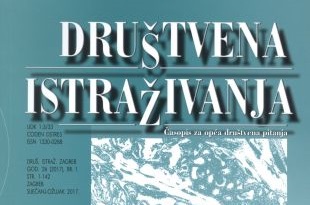SOCIAL CHANGES, MIGRATION AND ETHNIC STRUCTURE: CASE STUDY OF PETRINJA (CROATIA)
SOCIAL CHANGES, MIGRATION AND ETHNIC STRUCTURE: CASE STUDY OF PETRINJA (CROATIA)
Author(s): Jadranka Čačić Kumpes, Ivo NejašmićSubject(s): Social history, Evaluation research, Transformation Period (1990 - 2010), Migration Studies, Ethnic Minorities Studies
Published by: Institut društvenih znanosti Ivo Pilar
Keywords: Social changes; Migration; Ethnic structure; Petrinja;
Summary/Abstract: This paper deals with the change of the ethnic structure of Petrinja and its causes that seem to be paradigmatic for ethnically mixed areas in Croatia. Petrinja was chosen due to its bipolar ethnic structure in which the Croats and Serbs constitute the greater part of the population but also owing to the fact that radical changes in the proportion of these groups took place in the1945-1998 period. As late as 1948 Croats constituted slight-ly more than four fifths of the city population. In the year 1991 there were 40.96% of Croats, 45.14% of Serbs and 13.9% of "other and unknown" in the city of Petrinja. Thus in the city of Pe-trinja in four decades, the Croats lost their status of explicit majo-rity with a tendency of decreasing in percentage. The causes of these processes are to be found in the formation of new mobili-sational channels (negative selection of personnel, "nomen-clature" etc.) typical for the post-war communist regime. The power was based on the charisma of the local partisans and the members of the Communist Party in the political system with which (it seems) the local Serbs identified more than did the Croats.
Journal: Društvena istraživanja - Časopis za opća društvena pitanja
- Issue Year: 10/2001
- Issue No: 51-52
- Page Range: 253-277
- Page Count: 25
- Language: English

